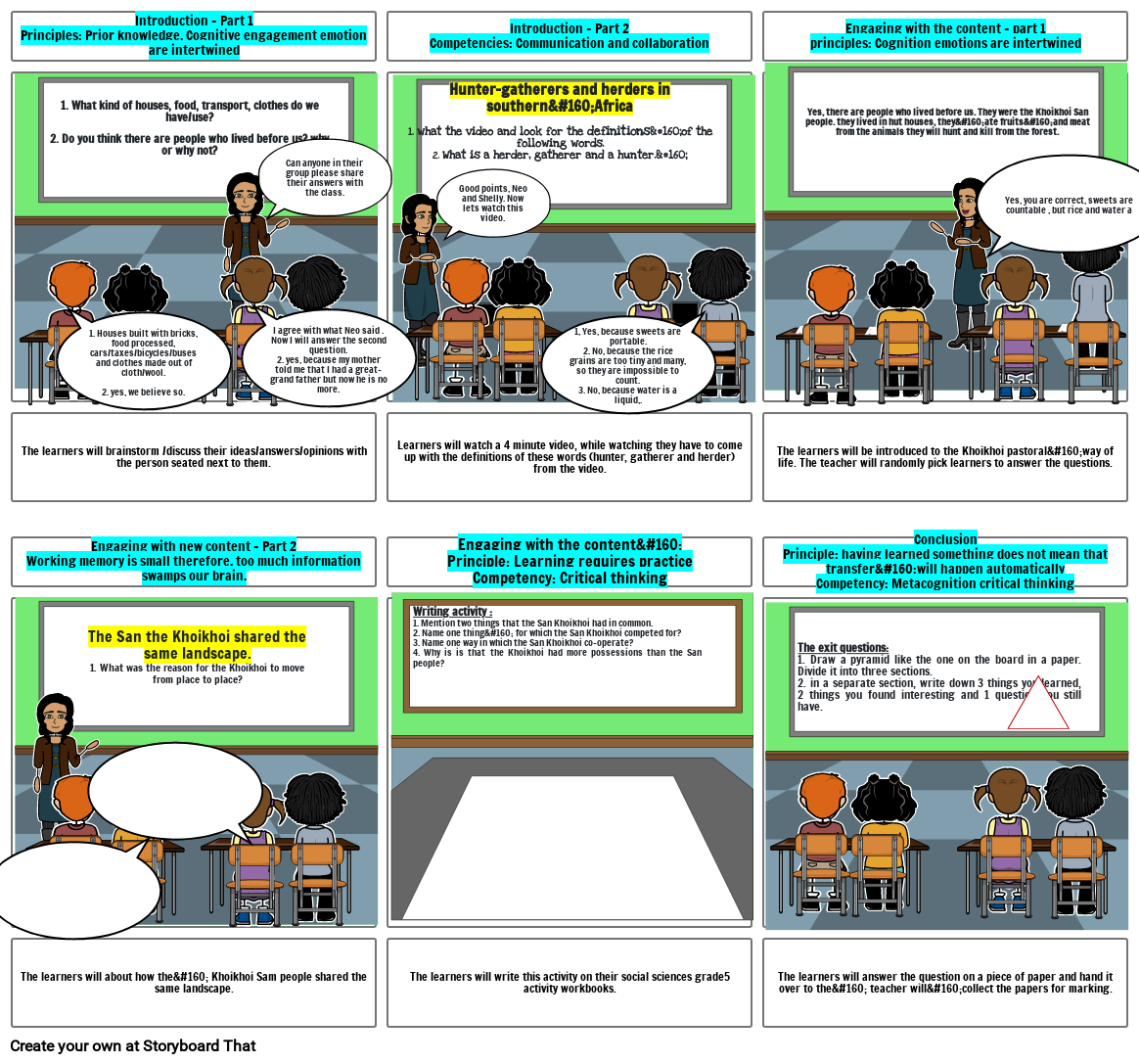social sciences lesson

Storyboard Text
- Introduction - Part 1Principles: Prior knowledge, Cognitive engagement emotion are intertwined
- 1. What kind of houses, food, transport, clothes do we have/use?2. Do you think there are people who lived before us? why or why not?
- 1. Houses built with bricks, food processed, cars/taxes/bicycles/buses and clothes made out of cloth/wool.2. yes, we believe so.
- I agree with what Neo said . Now I will answer the second question.2. yes, because my mother told me that I had a great-grand father but now he is no more.
- Can anyone in their group please share their answers with the class.
- Introduction - Part 2Competencies: Communication and collaboration
- Hunter-gatherers and herders in southernAfrica1. what the video and look for the definitionsof the following words.2. What is a herder, gatherer and a hunter.
- Good points, Neo and Shelly. Now lets watch this video.
- 1, Yes, because sweets are portable.2. No, because the rice grains are too tiny and many, so they are impossible to count.3. No, because water is a liquid,.
- Engaging with the content - part 1principles: Cognition emotions are intertwined
- Yes, there are people who lived before us. They were the Khoikhoi San people. they lived in hut houses, theyate fruitsand meat from the animals they will hunt and kill from the forest.
- Yes, you are correct, sweets are countable , but rice and water a
- The learners will brainstorm /discuss their ideas/answers/opinions with the person seated next to them.
- Engaging with new content - Part 2Working memory is small therefore, too much information swamps our brain.
- The San the Khoikhoi shared the same landscape.1. What was the reason for the Khoikhoi to move from place to place?
- Learners will watch a 4 minute video, while watching they have to come up with the definitions of these words (hunter, gatherer and herder) from the video.
- Engaging with the contentPrinciple: Learning requires practiceCompetency: Critical thinking
- Writing activity :1. Mention two things that the San Khoikhoi had in common.2. Name one thing for which the San Khoikhoi competed for?3. Name one way in which the San Khoikhoi co-operate?4. Why is is that the Khoikhoi had more possessions than the San people?
- The learners will be introduced to the Khoikhoi pastoralway of life. The teacher will randomly pick learners to answer the questions.
- ConclusionPrinciple: having learned something does not mean that transferwill happen automaticallyCompetency: Metacognition critical thinking
- The exit questions:1. Draw a pyramid like the one on the board in a paper. Divide it into three sections.2. in a separate section, write down 3 things you learned, 2 things you found interesting and 1 question you still have.
- The learners will about how the Khoikhoi Sam people shared the same landscape.
- The learners will write this activity on their social sciences grade5 activity workbooks.
- The learners will answer the question on a piece of paper and hand it over to the teacher willcollect the papers for marking.
Over 30 Million Storyboards Created
No Downloads, No Credit Card, and No Login Needed to Try!

